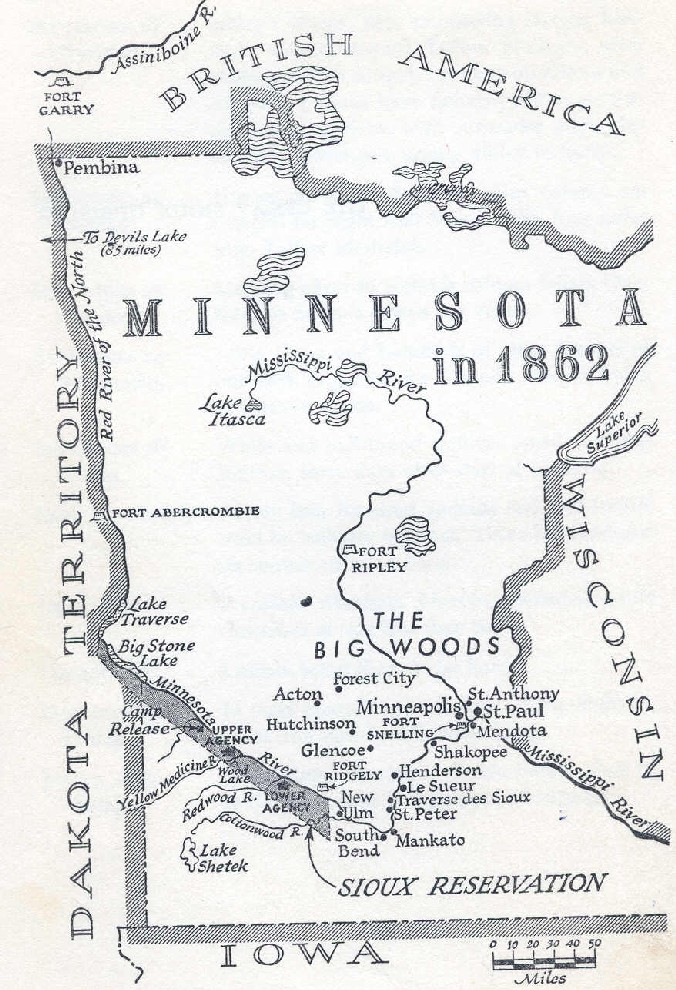6th Grade Social Studies GANAG Lesson Plan
Dakota War of 1862
Lesson Duration: 55 Min
Materials Needed:
District Technology (iPads, Chromebooks, Computer Lab)
Paper (Loose leaf or in Social Studies notebooks)
Lesson Description:
This lesson fits into 6th grade’s unit on the civil war though focuses on the conflict of Native Dakota people of Minnesota and the white settlers. The lesson will focus on the causes and the differing perspectives of the Dakota and the settlers regarding the conflict.
MN 2011 Social Studies Standard/Benchmark:
6.4.4.19.3 Explain reasons for the United States-Dakota War of 1862; compare and contrast the perspectives of settlers and Dakota people before, during and after the war. (Civil War and Reconstruction: 1850-1877)
Goal: Learning targets/objectives/”I can” statements:
- I can identify the reasons for the Dakota War of 1862.
- I can compare and contrast the perspective of settlers and Dakota people regarding the conflict.
- I can create a diagram illustrating those conflicting perspectives.
- I can use alternative media as resources.
Access Prior knowledge: 10 minutes.
Begin the lesson by writing the words, “Native Minnesotans” on the white board. Ask students at their tables or divided small groups to write down five statements in reaction to those words. Tell them these statements can be facts they know, stories they have heard, or information that they have learned from other classes. Give them five minutes to do this. Then ask them to share out while you write those ideas on the board. Make sure to highlight and lead students to the following words: war, treaties, reservations, Dakota Nation, land ownership, and white settlers. These ideas will help you connect and lead students to the new information you are teaching today about the Dakota War of 1862. Because this is taught during the Civil War unit, you can also connect to what they are learning about the civil war and one of the reasons for the civil war: expansion. Though the conflict is not between the white settlers, the same sentiments of land expansion caused conflict and war with the Dakota people of Minnesota.
New Information: 20 minutes.
Start by playing “The Dakota War of 1862: The War Begins” over the speakers in the room. Ask students what they heard while listening about how the war began. Ask students why Dakota people, with the skills to get nourishment from the land, would be stealing food from settler’s farms in the first place. Ask students if they can remember what a treaty was especially in the context of First Nations people in expansion era America. Explain that treaties, or agreements, were made with the U.S. government and the Dakota people of what is now Minnesota. Tell students they will have an opportunity later to discover the exact treaties and how they were broken by the U.S. Ask students if broken promises made by the U.S. government is reason enough to start a war? Then briefly explain that the war lasted six weeks between the Dakota led by Little Crow and the U.S. All of which ended with the largest mass execution in the United States history of 38 Dakota people.


